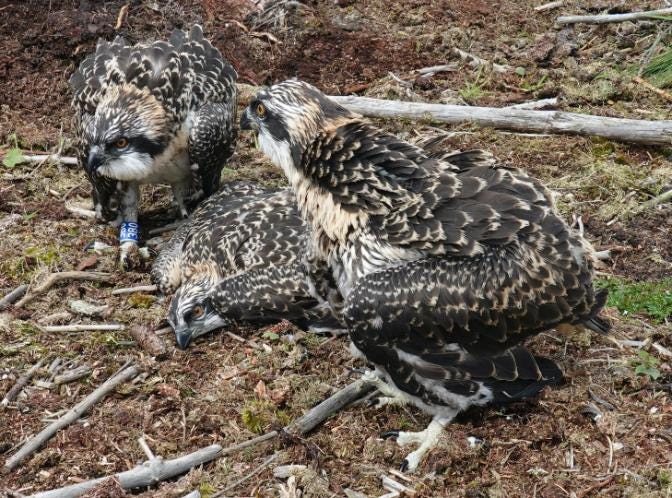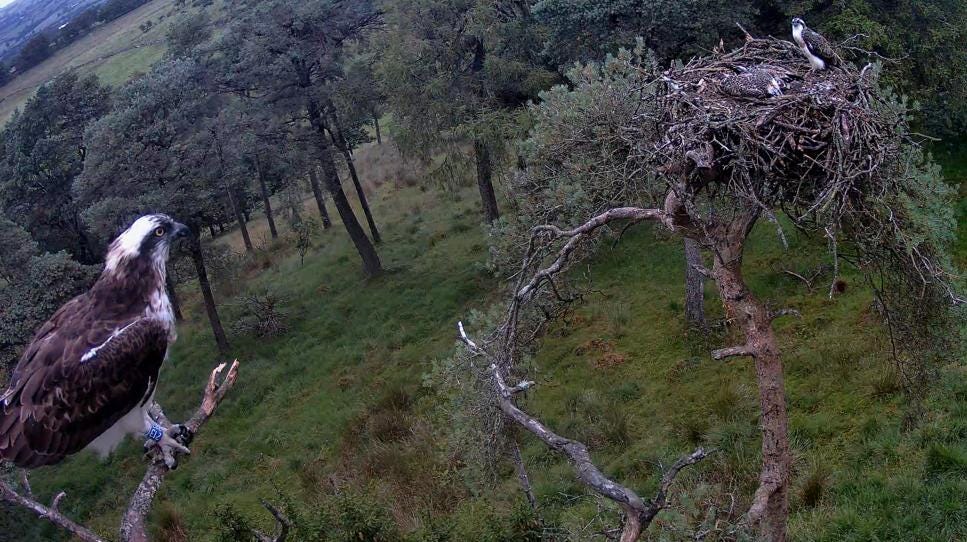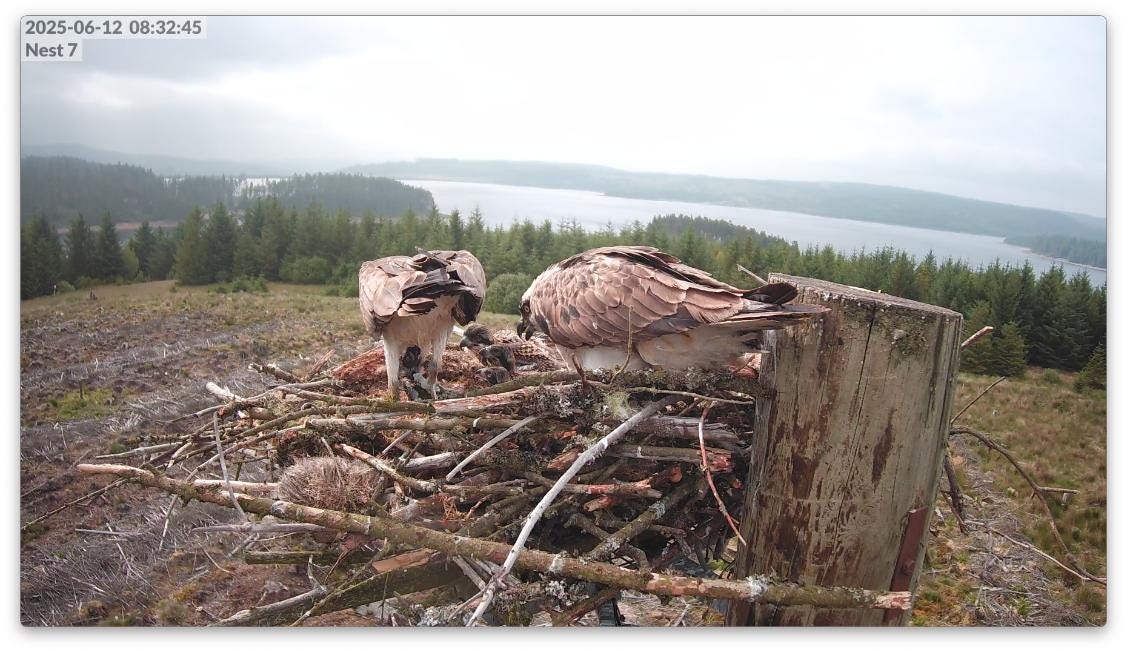Kielder’s ospreys take flight beyond the forest
From low to high as Kielder ospreys spread their wings. Tony Henderson reports
It was a low-key end to Northumberland’s osprey nesting season when 2025 proved to be the least productive year for the breeding birds since 2015.
Only six youngsters fledged from nests at Kielder Forest, with losses for reasons including predation, weather conditions and natural causes.
But the season has ended on a brighter note, with counts revealing that 19 youngsters have fledged from seven nests at locations beyond the forest where one of the parents was a Kielder-hatched osprey.
And it is possible that other Kielder birds are breeding, but have not been identified.
It demonstrates the importance of Kielder as a source of young birds which go on to nest elsewhere and expand the osprey population.
Leading the line-up of Kielder-hatched birds based away from the forest is Blue 35, the oldest known breeding osprey from Kielder, who hatched in Northumberland in 2010 and has raised 32 chicks with White YW from the Lake District Osprey Project since 2014.
The pair nest at Cumbria Wildlife Trust’s Foulshaw Moss nature reserve, where this year they reared another three offspring.
Drainage and tree planting in the 1950s–60s at Foulshaw meant much of the wetland wildlife was lost, but these species are now returning following the trust’s 15-year restoration of the peatland site.
Lowland raised mires like Foulshaw Moss are one of Western Europe’s rarest and most threatened habitats. Around 94% of this unique habitat has been destroyed or damaged in the UK, so these remaining areas are incredibly important for a range of wildlife - including ospreys.
In the North Lakes, 207/Cawfields from Kielder and his new mate raised three youngsters in their first season.
Another new breeder, 426/Embleton, is the first known Kielder osprey to establish a nest in the county outside Kielder Forest. It is a wild nest and on private land.
He and 207/Cawfields have the same father - KM18 from Kielder nest seven, whose offspring also include “away” breeders 224/Bywell and 213/Donkleywood.
“KM18 fathered 10 chicks in six years (2018–2022), so for four of them to be breeding is an excellent result,” said Kielder osprey monitor Joanna Dailey.
Each year the newly ringed birds are given names beginning with the same initial letter and which are linked to Northumbrian locations.
This year at Kielder three from artificial nesting platforms which can be accessed for ringing have been called Ingram, Ingoe and Irthing.
The other three birds are without a name as they hatched in nests in natural trees which cannot be climbed and so could not be ringed.
The Kielder Osprey Project is a partnership between Kielder Water & Forest Park Development Trust, Forestry England, Northumberland Wildlife Trust, Northumbrian Water and Wild Intrigue.




